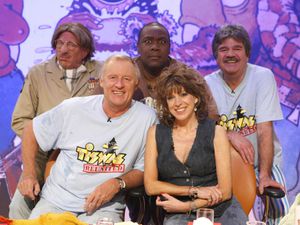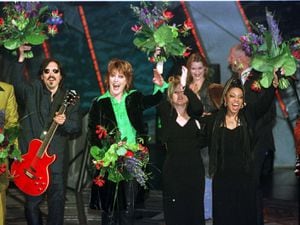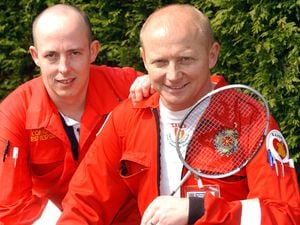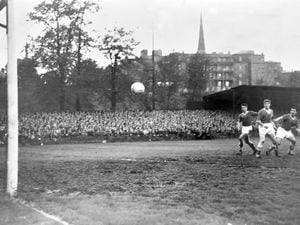Cold afternoons, glass plates, and Billy Wright – life as a rookie football photographer in the 1950s
It was a cold winter's afternoon at Molineux. The ground was hard, the wind was bracing, the fans were on edge.

Then a ball is passed into the penalty area, and 17-year-old Graham Gough knows he will only get one chance to take his shot. Seconds seem like hours as he takes his time to pick the right moment... perfect! The Graham gets his picture a fraction of a second before the ball bursts the back of the neck.
While everyone knows that top-flight footballers face a lot of pressure at an early age, former Express & Star man Graham recalls the lot of a trainee match-day photographer also had its moments when he cut his teeth in the 1950s.
Now 84, Graham still has vivid memories of spending his Saturdays either at The Hawthorns or Molineux capturing the crucial moments on camera.
These were the glory days for Wolves, when Stan Cullis's swashbuckling side vied with arch-rivals Manchester United to be the top dogs in British football. It was the period when Wolves' blond-mopped captain Billy Wright brought a touch of glamour to West Midlands football, while a seemingly endless supply of goals from free-scoring striker Jimmy Murray – who later went on to play for Walsall and Telford United – helped power Wolves to consecutive league titles. Indeed, one of Graham's favourite pictures shows Murray heading home in a goal against Newcastle United.
His outfit of a surplus duffle coat, fingerless gloves, woolly hat and an extra thick pair of army trousers, was probably not so different from what they wear today, but the equipment he used was somewhat more rudimentary.
"My camera was a 5x4 glass plate VN Press Camera with only 12 exposures to cover the whole of the match," says Graham, from Kinver.
"There was no telephoto lens, only a standard lens and with this equipment you were only able shoot action in the goal area."
While today's digital cameras enable photographers to take dozens of shots in quick succession, Graham had to load a fresh glass plate every time he wanted to take a single picture.
"Working with a VN Press Camera was not easy having just a single shot and then having to change slides was time consuming and by the time you had done this the players were halfway down the pitch, so you had to be very precise, not only in football but any action pictures, recalls Graham.
"The most worrying aspect of covering a match was you only had 12 exposures and if you reached ten minutes before full time and you had used up all 12 you may as well go home," he says. "If they scored after that, you were in real trouble with the picture editor."
The old cliche that 'half-time can't come soon enough' certainly resonated for Graham when the weather was cold.
"It was back inside to the press room for a hot drink," he says. "It was tea only at Wolves but at Albion you had a slice of toast as well and perhaps a nip of scotch from a fellow photographer who always had a hip flask."
While the job may have been tough, Graham also got to experience the finest period in Wolves' history. And there was none of the unpleasantness which marred Sunday's derby game between Albion and Wolves.
"I look back on these days with affection, there was little trouble from the fans, and the players were not superstars," he says.
"In the day-to-day life during the 1950s, things were scarce. There was not much variety in clothes shoes were expensive and lots of food items were still unavailable, but people worked hard and there was a great camaraderie.
"Black Country folk were pulling together after the devastation of the Second World War but there was one compensation, a pint of beer was 1s 2d."





